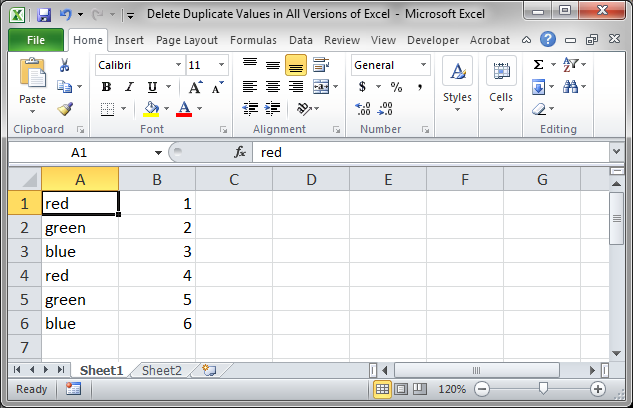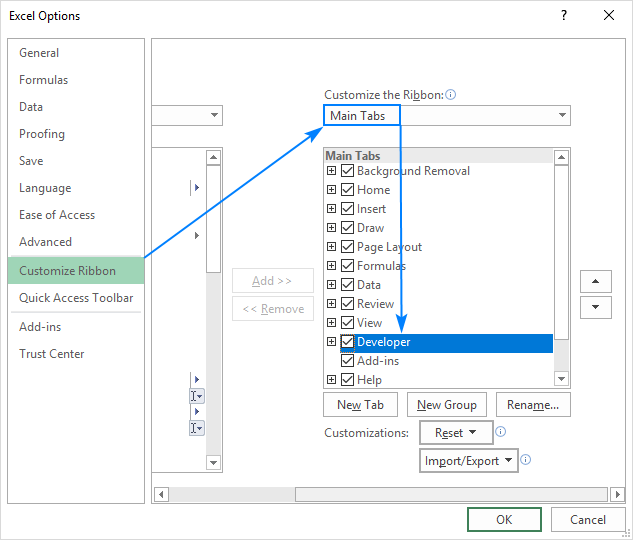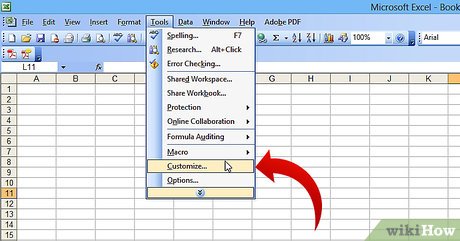

- #DEVELOPER TAB EXCEL 2003 HOW TO#
- #DEVELOPER TAB EXCEL 2003 CODE#
- #DEVELOPER TAB EXCEL 2003 DOWNLOAD#
The Controls group is really useful for putting actual controls on Visio pages, though. But honestly, most of us probably just hit Alt + F11 to bring it up. Here you get easy access to the Visual Basic for Applications (VBA) development environment. Moving from left to right, we have: Developer Ribbon Tab: Part 1/3: Code, Add-ins, Controls I’ll point out the bits in each group that I particularly lik. To save you that trouble of zooming in to the figure above, or flipping back and forth to Visio, here’s a close-up of the Developer ribbon tab, broken into three chunks. If you are creating an automated solution, sometimes you need to know technical stuff like this! This lets you see which events fire when you do something in Visio. Access to the EventMonitor add-in that is installed with the Visio SDK.Yes, you can put controls on Visio pages and get them to interact with VBA “code-behind” stored in the document’s VBA project.


Once you’ve given yourself access to the Developer tab, you’ll get some additional features that are otherwise hard to access.
#DEVELOPER TAB EXCEL 2003 CODE#
The SDK includes code samples, tools (the add-ins you see in the SDK Tools group), Type libraries for automation, Add-on wizards for Visual Studio, and developer-centric documentation. The Visio SDK is quite useful if you have any ambitions for creating your own Visio SmartShapes using the ShapeSheet, or automating Visio by writing code in VBA, VB.NET, C#, C++ or other languages.
#DEVELOPER TAB EXCEL 2003 DOWNLOAD#
It only shows up if you’ve installed the Visio SDK, which you can download from Microsoft: You might not have the SDK Tools group way over on the right. Voila! You should see something like this: Check the Developer check box, then click “OK”.In the list on the right, locate Developer (click to view larger image).Find a blank bit of space on your ribbon.

Turning on the Developer ribbon tab is a snap. Some of the reasons for turning on Developer Mode apply to the ribbon tab as well, but let’s give it a fresh look. Visio’s user-interface has since moved on, introducing the Ribbon interface in Visio 2010, and carrying that on into Visio 2013 and Visio 2016. So while I am greedily saving myself some future work, you will also benefit, because now I can produce more content!Ī long time ago, I wrote Top 9 Reasons for Turning-on Developer Mode. I realized I was avoiding writing articles, because I didn’t want to get caught up in little details that were somewhat removed from the major topic. And hopefully you’ll agree that I talk about doing neat things with Visio on this website.įor a long time, I have needed a quick way to tell people “how to turn the Developer ribbon tab”. Having the developer ribbon tab active is a prerequisite for doing a lot of neat things in Visio. (If you’re in a hurry, skip to Turn on the Developer Ribbon Tab below)
#DEVELOPER TAB EXCEL 2003 HOW TO#
Find out how to turn it on, and what good it will do you! Many of the tips and tricks that I talk about (or want to talk about) on this site require the Developer Ribbon Tab.


 0 kommentar(er)
0 kommentar(er)
